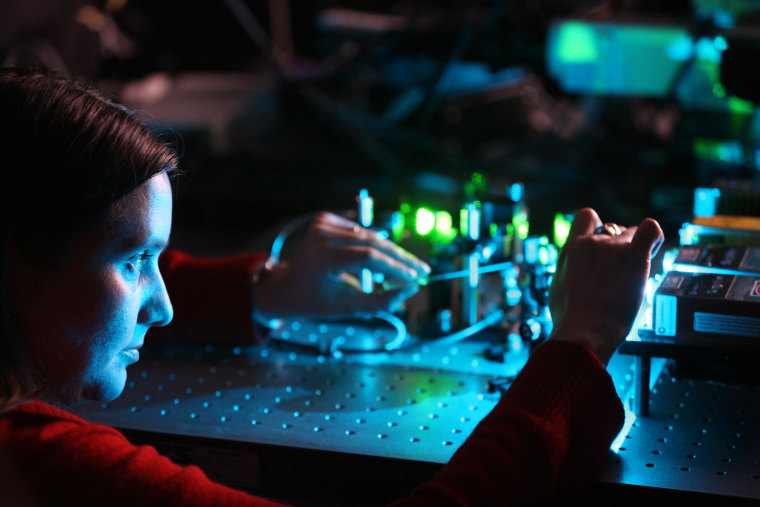Imagine using light to record someone's thoughts, or using radio waves to stop an epileptic spasm before it starts. Federal scientists announced the first steps for such projects in what they called the next “moon shot” on Tuesday — a new program to explore the human brain that begins with a $46 million down payment.
Think new research that would let doctors use lasers to affect individual brain cells, to find new ways to actually record brain activity or to create a kind of cap that would make live PET scan images of the brain while people live their day-to-day lives.
The hope is to find treatments and cures for Alzheimer’s, Parkinson’s, depression and a range of other brain diseases, but also to figure out just how this incredibly complex organ works.
“It’s the thing that makes you who you are,” said Dr. Francis Collins, director of the National Institutes of Health. “We think we know how it works, but we don’t.”
“It’s the thing that makes you who you are."
President Barack Obama ordered up the initiative in April of last year, asking for $100 million in funding and spending to get it off the ground. He gave NIH until the end of this year to come up with a plan and got Congress to appropriate special funding despite the budget crunch.
He’ll give more detail later Tuesday at a White House event.
The result has the country’s leading scientists gushing. “This is kind of a moon shot,” Collins told a news conference. The Brain Research through Advancing Innovative Neurotechnologies (BRAIN) Initiative will fund the work of more than 100 investigators in 15 states and three countries.
“How do the billions of cells in our brain control our thoughts, feelings and movements? That’s ultimately what the BRAIN Initiative is about,” said Dr. Thomas Insel, director of the NIH’s National Institute of Mental Health.
One of the projects that got money is at Lawrence Livermore National Laboratory in California, where a team will work with the University of California San Francisco and two small companies called Intan Technology and SpikeGadgets to make a little brain chip that can stimulate and record whole groups of individual neurons at once.
The team hopes to hook it up to use with what’s called optogenetic stimulation, a technique that uses light-sensitive proteins and light to manipulate brain cells and record their activity — perhaps, in the future, recording thoughts directly from the brain.
Another project aims to develop a wearable device for Positron emission tomography scans. PET scans mostly look for cancer and other disease in the body. They measure metabolism, but now only work when a patient is still. The new project could watch how the brain works during “a walk in the park,” Collins said.

“We are seriously tackling an understanding of the most complicated biological structures in the known universe,” Collins said. “A few years ago we would have considered this such a challenging goal as to be unattainable.”
The hope is to find structures, patterns and activity that no one even knew were there.
“There are projects here to explore deep parts of the brain that are effectively terra incognita,” said Cornelia Bargmann of the Howard Hughes Medical Institute and Rockefeller University, who co-chairs the BRAIN Initiative.
“We feel a little bit like we are Galileo, looking at the skies with a new telescope,” she added. “Already the new emergence of tools for looking at circuits and networks are showing patterns of activity in the brain that we never knew existed.”
Even a simple phone call sets off an astonishingly complex set of events in the brain, said Bargmann. “How is it that one sound calls up the memory of your sister and another sound calls up the memory of your boss who you don’t even like?” she asked.
“We feel a little bit like we are Galileo, looking at the skies with a new telescope."
The funding for the initiative is especially gratifying given that NIH spending has been cut by inflation and budget freezes over the past 10 years, says Collins. “We have lost about 23 percent of our purchasing power for medical research,” he said. “This whole effort has been on an extraordinary fast track for NIH.”
And it’s inspiring a whole new generation of scientists, both experienced and newly starting out, as well as researchers from outside of neurology. Medical research follows the money,and there is cash to be had here.
“A lot of the people you have here are people who are not the usual suspects,” said Dr. Story Landis, head of the National Institute for Neurological Disorders and Stroke. “This is just what we wanted to see.”
But it should pay off. Obama said the Human Genome Project, completed in 2003, had paid $140 for every dollar invested.